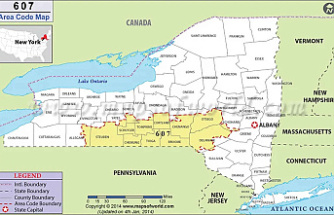The city plans to make alterations to the pilot project of separated bike lanes on Bloor St. West, after preliminary data showed that while they have increased cycling rates they have also led to significantly longer travel times for drivers.
Data on the one-year pilot project was collected last September and October, just weeks after the bike lanes were installed, and transportation staff stress that the numbers are interim and shouldn’t be used to judge the success of the bike lanes. The figures were released to the Star after it filed a freedom of information request.
They show that while the number of cyclists using the lanes increased by 36 Betebet per cent, from 3,300 a day before the lanes went in to 4,500 a day afterwards, car travel times during the afternoon peak period increased by 8 minutes and 25 seconds. In the morning peak period they increased by just over 4 minutes.
Prior to the lanes being installed between Shaw St. and Avenue Rd. it took just over 11 minutes to drive from Bay St. to Ossington Ave. during afternoon rush hour. Afterwards it took 19 minutes and 39 seconds. Driving times on parallel corridors weren’t adversely affected.
Daily car traffic volumes on Bloor St. also fell by about 22 per cent, which combined with the greater number of cyclists pushed the mode share of bicycles on the street from 12 per cent to 18 per cent.
Barbara Gray, the city’s general manager of transportation, is aware that critics of the project will see the increased driving times as proof that the bike lane isn’t working. But she said that by changing the timing of traffic signals, implementing turning and parking restrictions, and tweaking the bike lane design at trouble intersections, she fully expects to reduce the negative impact on car traffic.
Gray said that the city didn’t implement any of those kinds of operational changes to the street when the lanes went in, and the transportation department always intended to adjust the project once it had measured traffic and cycling patterns.
“We designed the pilot so that we had the opportunity to see how it was working and modify it based on the data that we see. We also don’t love the increase in travel times but we have ways to mitigate that and that’s what we’re going to move forward and do,” she said.
Areas of specific concern for traffic bottlenecks are where Bloor St. intersects with Bathurst St., and at Avenue Rd., where the bike lanes begin.
Pointing to the increased cycling rates, as well as survey results that show 64 per cent of local residents and businesses believe the lanes make Bloor St. safer, Gray said that the initial findings were encouraging. “We look at this and see it as very positive for the phase of the project that this is in right now and we have the capacity to make it even better.”
Councillor Joe Cressy, who represents one of two wards that the bike lanes pass through, has been a vocal proponent of the cycling project. He said that the “early data shows that there has been a very positive response but of course it’s a work in progress.”
“We put a bike lane on Bloor St. and the world didn’t end. People like it, they feel safer, and cycling is up. But we have more work to do and improvements to make,” said Cressy (Ward 20, Trinity-Spadina).
City staff will collect a second round of data in May and June, after the modifications have taken place. Gray said that information collected then will provide a more accurate picture of how the lanes are working.
The city installed the bike lanes on a 2.6-km stretch of Bloor St. in August, after city council overwhelmingly approved the pilot project. The vote of 38 to 3 was a huge victory for cycling advocates, who have been pushing to add bike infrastructure to the major downtown route for forty years.
The $500,000 pilot had the backing of Mayor John Tory, who said at the time of the vote that in order to build a “21st Century city” council needed to “provide alternate ways to move people around the city.” But he also warned that he would have no trouble calling for the lanes to be removed if the data showed that they weren’t working.
In an emailed statement on Thursday, the mayor said he had been watching the project “carefully.”
“It’s important to me that cyclists, drivers and pedestrians have safe and efficient routes through the city,” he said.
“At the half-way point of this process, we have preliminary data that will help us to make changes to improve the flow of people along Bloor and make sure this new street design works for everyone. I look forward to seeing the end result so city council can evaluate the pilot in its entirety.”
A report on the pilot project is expected to go before the public works committee in October. It’s expected to include recommendations to council on whether to keep, modify, or remove the lanes.
The Toronto Star and thestar.com, each property of Toronto Star Newspapers Limited, One Yonge Street, 4th Floor, Toronto, ON, M5E 1E6. You can unsubscribe at any time. Please contact us or see our privacy policy for more information.
Our editors found this article on this site using Google and regenerated it for our readers.












